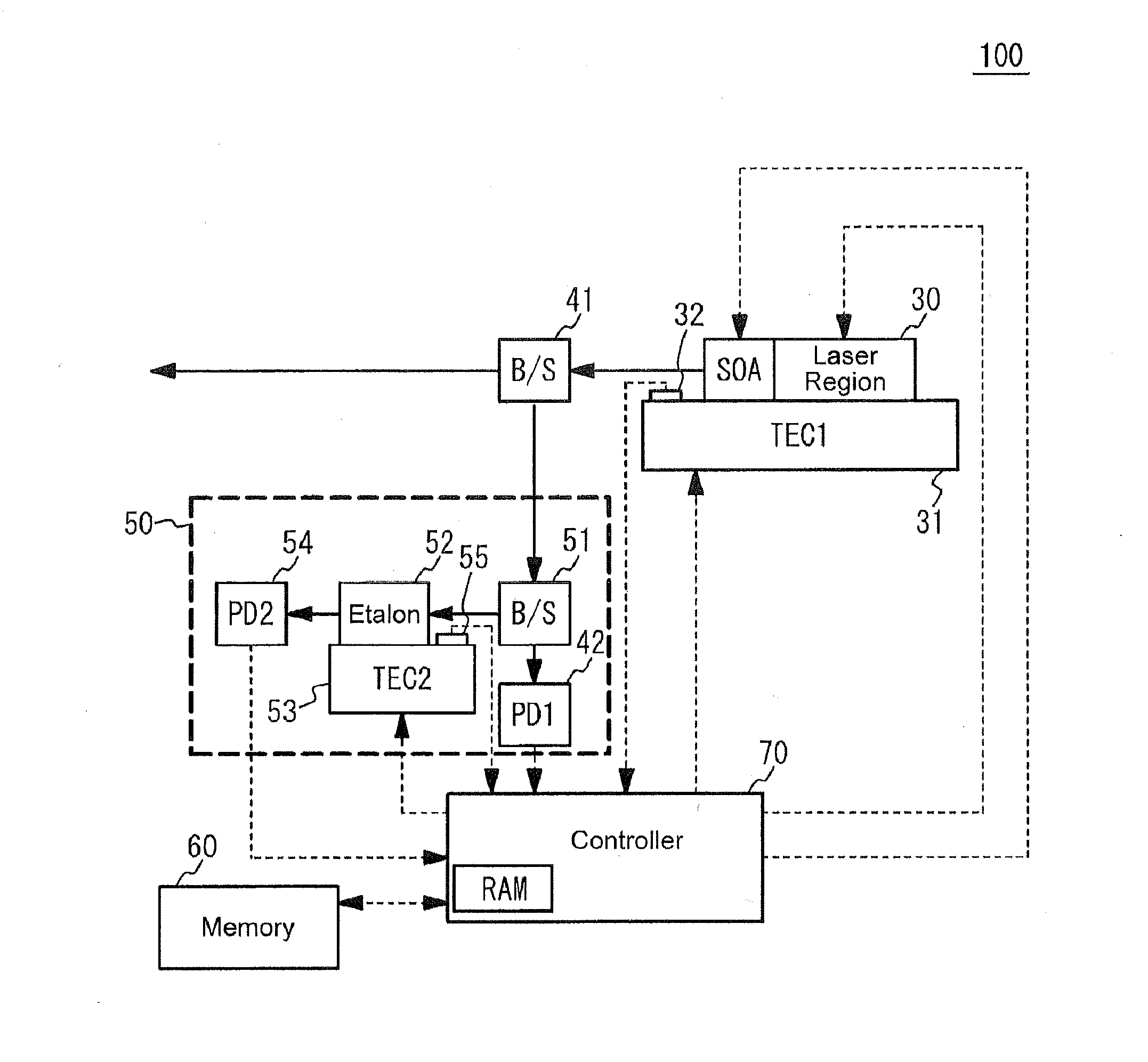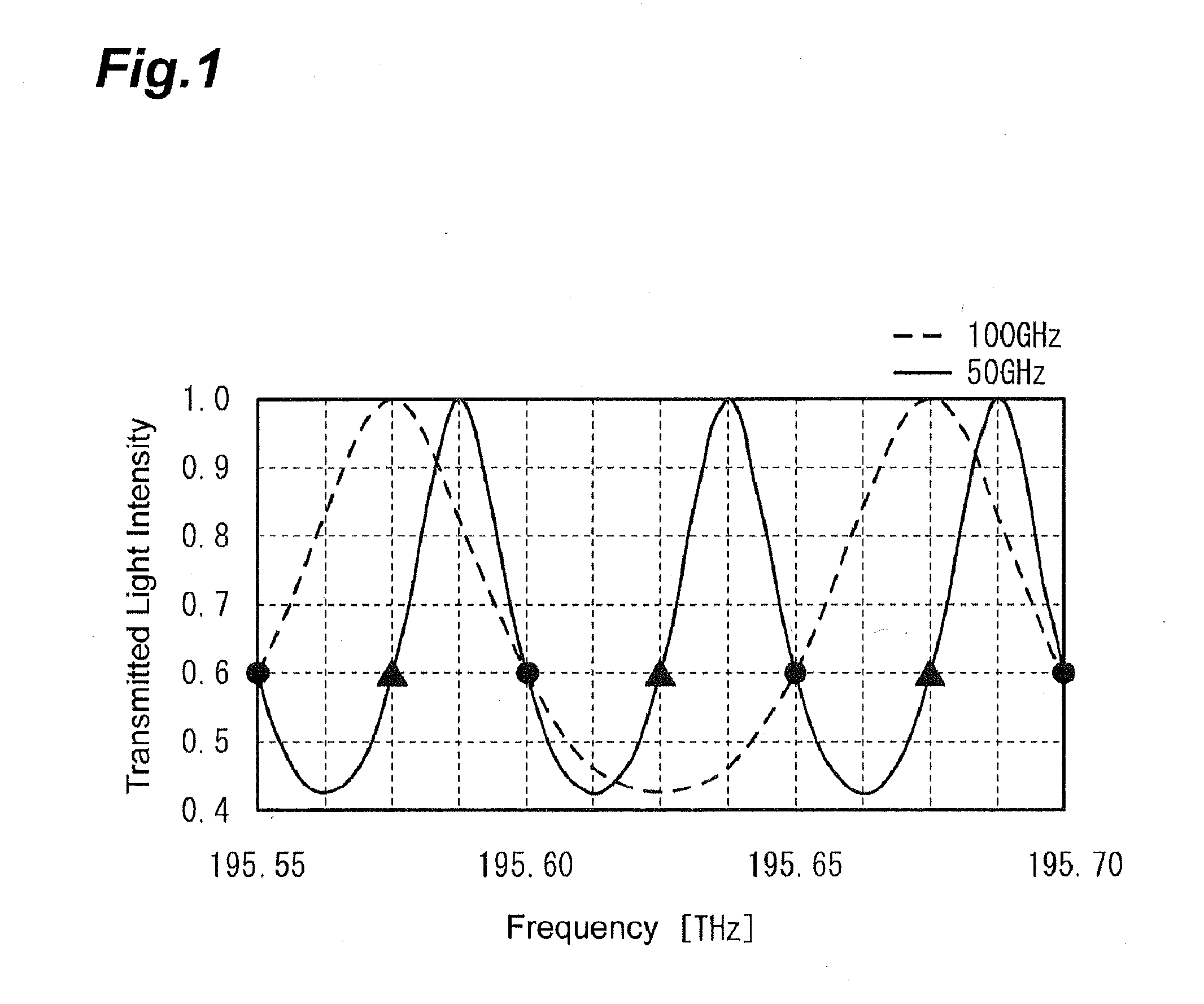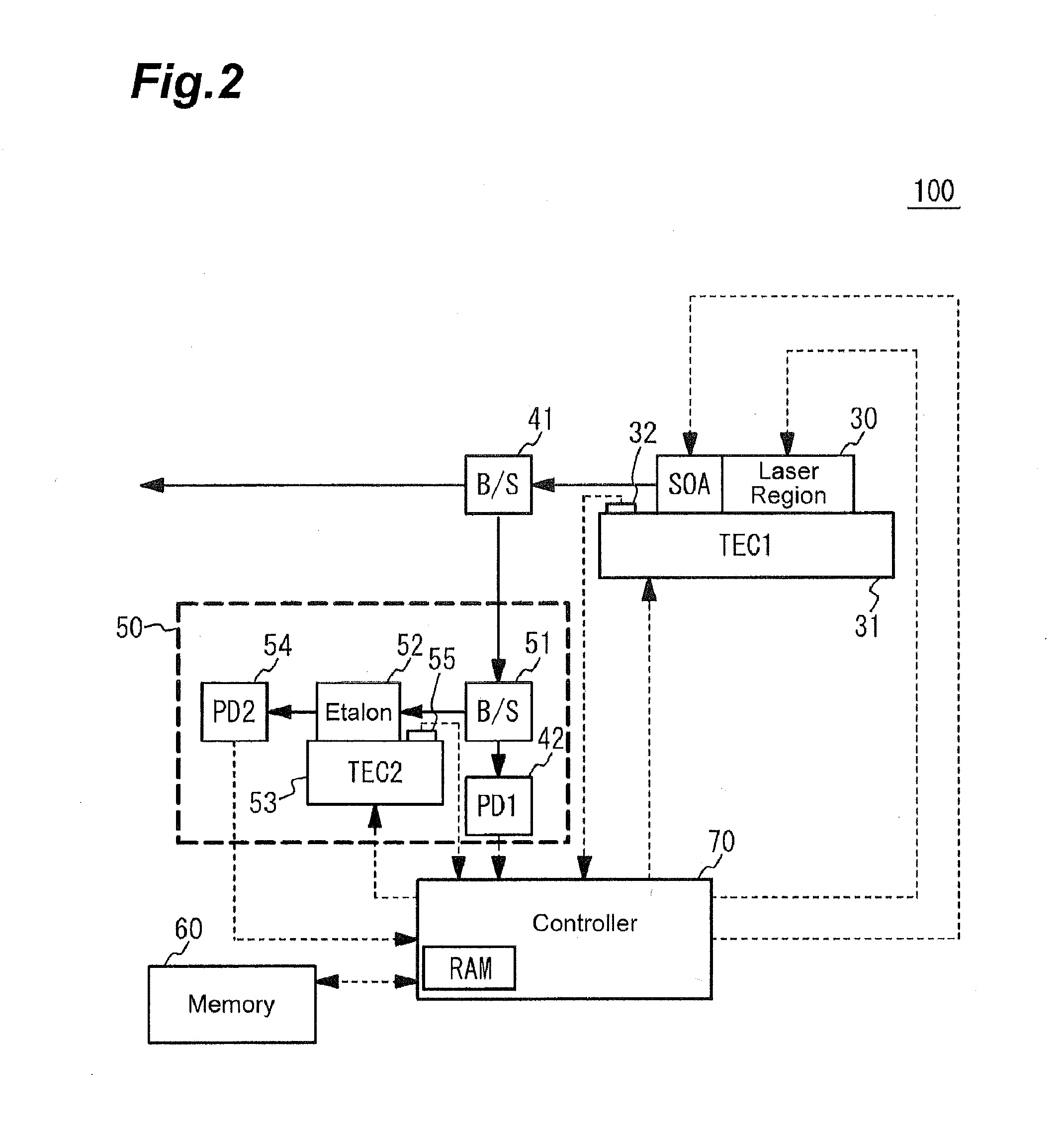Method for controlling wavelength-tunable laser
- Summary
- Abstract
- Description
- Claims
- Application Information
AI Technical Summary
Benefits of technology
Problems solved by technology
Method used
Image
Examples
first embodiment
[0031]FIG. 2 is a block diagram illustrating an overall structure of a wavelength-tunable laser 100 in accordance with the first embodiment. As illustrated in FIG. 2, the wavelength-tunable laser 100 comprises, as a laser device, a semiconductor laser 30 (tunable semiconductor laser) which can control its wavelength. The semiconductor laser 30 in this embodiment is provided with a region to become an SOA (Semiconductor Optical Amplifier) by coupling with a laser region. The SOA functions as an optical output control unit. The SOA can arbitrarily increase and decrease the intensity of optical output. The SOA can also control the intensity of optical output so that it becomes substantially zero. The wavelength-tunable laser 100 further comprises an output detection unit 40, a wavelength locker unit 50, a memory 60, a controller 70, and the like. The controller 70 controls the wavelength-tunable laser 100 and has a RAM (Random Access Memory) therewithin
[0032]FIG. 3 is a schematic secti...
second embodiment
[0087]While the first embodiment explains arbitrarily set wavelength control (gridless control), the present invention is also applicable to grid control with fixed wavelengths. FIG. 10 is a flowchart for explaining a starting procedure for achieving a required wavelength (a given grid wavelength) of the semiconductor laser 30. As illustrated in FIG. 10, the controller 70 receives a wavelength request F′ (step S21). The required wavelength F′ is inputted from an external I / O device which is not depicted. Typically, an I / O device corresponding to the RS232C standard is employed. Subsequently, the controller 70 determines whether or not the required wavelength F′ is any of fundamental wavelengths F (step S22).
[0088]When it is determined “Yes” at step S22, the controller 70 selects the same slope as with the fundamental wavelength (step S23). When it is determined “No” at step S22, the controller 70 selects the slope opposite to the fundamental wavelength (step S24). After executing st...
modified example
[0095]The above-mentioned embodiment selects the slope. Selecting the slope is equivalent to selecting the sign for correcting the driving condition of the semiconductor laser 30 by feedback control in the auto frequency control. Hence, whether or not to reverse the sign for correcting the driving condition of the semiconductor laser 30 may be determined without selecting the slope.
[0096]FIG. 11 is a flowchart illustrating another example of the starting procedure for achieving the required wavelength of the semiconductor laser 30. Differences from the flowchart of FIG. 10 will be explained. When it is determined “Yes” at step S22, the controller 70 does not reverse the sign concerning the correction of the semiconductor laser 30 in the feedback control at step S31 (step S23′). Specifically, the controller 70 sets the fundamental wavelength flag. When it is determined “No” at step S22, the controller 70 reverses the sign concerning the correction of the semiconductor laser 30 in the...
PUM
 Login to View More
Login to View More Abstract
Description
Claims
Application Information
 Login to View More
Login to View More - R&D
- Intellectual Property
- Life Sciences
- Materials
- Tech Scout
- Unparalleled Data Quality
- Higher Quality Content
- 60% Fewer Hallucinations
Browse by: Latest US Patents, China's latest patents, Technical Efficacy Thesaurus, Application Domain, Technology Topic, Popular Technical Reports.
© 2025 PatSnap. All rights reserved.Legal|Privacy policy|Modern Slavery Act Transparency Statement|Sitemap|About US| Contact US: help@patsnap.com



